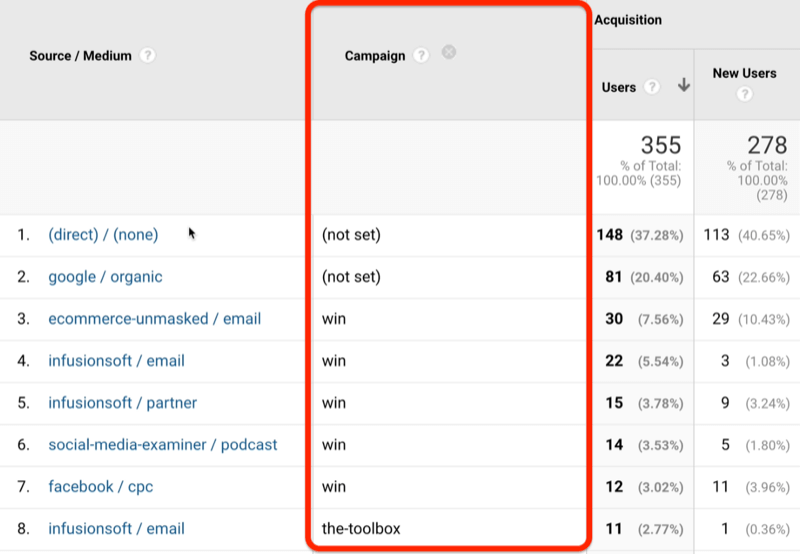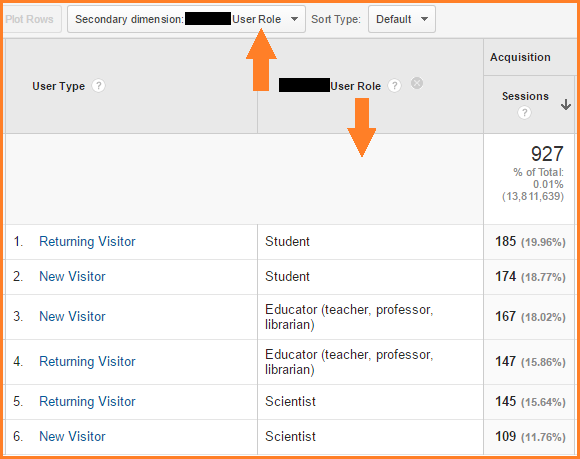Understanding the 'Secondary Dimension' in Google Analytics: Full Review
Understanding the 'Secondary Dimension' in Google Analytics: Full Review
Blog Article
Deciphering the Significance of Second Dimension in Google Analytics: All Concerning Its Significance and Impact
In the world of electronic analytics, the usage of secondary measurements within Google Analytics offers as an essential tool for critical much deeper layers of data understandings. The relevance of second dimensions depends on their capability to offer a nuanced view of user behavior and communication with a web site or platform. By dissecting data beyond surface-level metrics, businesses can unlock a wide range of information that refines and forms tactical choices advertising and marketing efforts. This expedition right into the realm of second measurements not only offers a detailed understanding of customer involvement yet also loses light on the complex characteristics that drive online efficiency.
Recognizing Secondary Measurements in Google Analytics
The understanding of second dimensions in Google Analytics is important for obtaining deeper understandings right into user actions and website performance. While main measurements supply basic information factors such as web traffic resources and page sights, second measurements enable a more nuanced evaluation by offering extra context to these key metrics. By incorporating additional dimensions, individuals can sector and filter their information to reveal patterns and patterns that may not be quickly obvious.

Revealing the Conveniences of Additional Dimensions
Building upon the fundamental understanding of second measurements in Google Analytics, exploring the benefits they provide reveals important insights for enhancing information evaluation and decision-making. By including additional dimensions, customers can dive deeper right into their information, acquiring an extra comprehensive view of customer habits, material performance, and various other crucial metrics.
Moreover, second dimensions supply context to key data, using extra layers of info that can help in understanding customer interactions and choices. This boosted understanding can assist critical decision-making, causing even more targeted advertising and marketing projects, website optimizations, and overall enhanced efficiency. In essence, second dimensions act as an effective device for opening deeper insights and optimizing the energy of Google Analytics for organizations and internet site proprietors.
Leveraging Secondary Dimensions for Boosted Insights
By utilizing the power of secondary dimensions in Google Analytics, organizations can uncover deeper insights that drive educated decision-making and tactical optimization initiatives. Leveraging secondary dimensions allows organizations to dig beyond surface-level data and obtain a much more detailed understanding of customer actions, audience demographics, website traffic resources, and internet site efficiency. By combining key dimensions like website traffic resources with secondary dimensions such as geographical location or gadget classification, services can recognize which devices or regions are driving the most useful web traffic to their internet site.
Additionally, additional dimensions make it possible for companies to sector and analyze data better, aiding them determine patterns, patterns, and possibilities that might have or else gone undetected. By making use of secondary measurements, organizations can tailor their advertising and marketing techniques, web content, and user experience to better fulfill the needs and choices of their target audience. In essence, leveraging second dimensions in Google Analytics equips companies to make data-driven decisions that result in enhanced efficiency, raised ROI, and lasting growth.

Impact of Additional Measurements on Data Evaluation
Enhancing data analysis with the use of secondary measurements in Google Analytics gives organizations with a much deeper understanding of their on the internet efficiency metrics. By incorporating additional measurements, such as time of day, geographical area, or gadget group, organizations can uncover valuable understandings that might have been forgotten with primary measurements alone. This improved degree of granularity permits even more precise division of information, allowing services to recognize patterns, patterns, and correlations that can drive strategic decision-making.

Maximizing Potential: Second Capacities Strategies
The critical utilization of second measurements in Google Analytics prolongs past boosting information evaluation; it includes crafting targeted strategies to unlock the full capacity of useful insights for service development. By utilizing second dimensions effectively, services can dig much deeper into their web site web traffic, customer actions, and advertising and marketing projects to draw out actionable insights. One Visit Website essential strategy is to integrate secondary measurements with main measurements to acquire a detailed view of user interactions. Pairing the main measurement of 'source/medium' with additional measurements like 'landing page' or 'tool category' can expose which networks are driving website traffic to particular web pages or how customer habits differs throughout devices.
In addition, making use of additional dimensions to section data based upon user demographics, habits, or modern technology can aid businesses customize their advertising and marketing efforts to certain target market segments. This targeted strategy can bring about enhanced conversion prices, improved user experiences, and eventually, enhanced ROI. By making the most of the potential of additional measurements in Google Analytics, companies can make educated decisions, maximize their on the internet presence, and drive lasting development.
Final Thought
In conclusion, additional dimensions in Google Analytics play a critical great post to read role in giving deeper insights and improving data evaluation. Incorporating secondary measurements right into information analysis approaches can lead to more informed decision-making and enhanced general performance.
While key dimensions provide basic data points such as website traffic sources and web page views, second measurements permit for an extra nuanced evaluation by offering added context to these key metrics. By integrating key measurements like traffic sources with secondary measurements such as geographic place or tool category, organizations can identify which devices or areas are driving the most valuable traffic to their web site.
By including additional measurements, such as time of day, geographical location, or device classification, organizations can uncover useful understandings that may have useful source been overlooked with key measurements alone. One key strategy is to combine second dimensions with primary dimensions to acquire a detailed sight of user communications. Matching the key measurement of 'source/medium' with second dimensions like 'touchdown page' or 'tool classification' can disclose which networks are driving website traffic to details pages or how user actions varies across gadgets.
Report this page